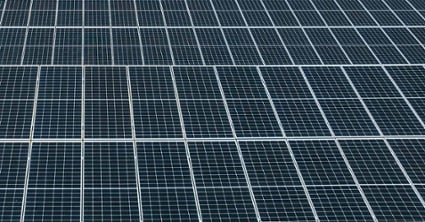The Inflation Reduction Act (IRA), passed in August 2022, was the most comprehensive and ambitious program the United States has ever sponsored to promote renewable energy use. The IRA allocated $369 billion of federal money to be used toward energy and climate change investments over the next decade. The IRA presents a distinct opportunity for businesses, non-profit organizations and municipalities to leverage key tax credits and cash payouts in exchange for installing solar.
The following points summarize the most important aspects of the IRA for commercial solar projects. For a more detailed explanation, or for specific questions, please consult with SunPeak’s project development team and your organization’s tax specialist.
Investment Tax Credit (ITC) Revitalized and Expanded
An important result of the Inflation Reduction Act was the revitalization of the Investment Tax Credit (ITC). The ITC, otherwise known as the federal solar tax credit, was immediately reinstated to its historic peak benefit of 30%, and was further expanded with new tax credit adders that can increase the potential payout for certain projects. By claiming the ITC, solar customers receive a dollar-for-dollar tax credit equal to 30% of the total project cost in the year the system is commissioned. The ITC will remain at 30% until at least 2032. A phase out will begin when greenhouse gases have been reduced by 75% relative to 2022 levels.
Beyond standard solar PV system equipment, the ITC can now be used toward the cost of other aspects of the project including:
- Battery storage
- All interconnection costs for projects less than 5 MWac
Prevailing Wage Standards & Apprenticeship Requirements
Solar projects above 1 MWac and any battery storage projects require special wage and labor provisions to qualify for the base 30% federal tax credit. These provisions include payment of locally-prevailing wages to all laborers and the use of apprenticeship labor.
Note: As a union signatory, SunPeak meets these requirements as part of our standard construction and Operations & Maintenance (O&M) processes.
ITC Project Adders: Opportunities to Tip the Scale Past 30%
Projects may be eligible for additional tax credit benefit if they meet any of the following criteria:
- Use of Domestic Content (+10%)
Within the IRA, the federal government began incentivizing the use of American-produced components and materials in solar PV projects. To qualify for an additional 10% ITC, a solar project must utilize 100% American-produced iron and steel for the structural components and at least 45% of the remaining solar equipment must also be American-made.
This provision has sparked a new wave of growth in domestic solar manufacturing in the past couple of years, but some projects still cannot meet the domestic content thresholds with ease. SunPeak’s experienced team is well-informed on domestic content requirements and procurement options and will guide you through all tax credit adder and incentive options available to your specific project, so you get the most value from your project. - Special Project Sites
Projects located in specific areas may also qualify for additional ITC.
- Energy Communities (+10%)
All projects sited in “energy communities” can add 10% ITC. These areas include brownfields or locations recently associated with fossil fuel mining, storage or energy production, or areas recognized by the Environmental Protection Agency (EPA) as being contaminated or polluted based on an environmental site assessment. SunPeak project developers can help you determine if your site qualifies for this adder. - Low-Income Areas (+10%)
All projects under 5 MWac sited in a low-income area, as defined by the New Markets Tax Credit, can add 10% ITC. Qualified low-income residential building projects or qualified low-income economic benefit projects can add 20% ITC.
- Energy Communities (+10%)
Note: SunPeak researches available incentives to maximize the project economics and ROI for each customer. When tax credit adders are available and make financial sense, SunPeak will review these options with customers during the preliminary proposal process.

More IRA Benefits for Commercial Solar Projects
New with the Inflation Reduction Act, more entities, including state governments and non-profit organizations, can directly benefit from either the ITC or PTC. A couple of highlights for these customers include:
- Direct Pay
Tax-exempt and governmental entities investing in solar can elect a cash payment from the IRS in lieu of tax credits. By offering direct monetary compensation, the federal government has streamlined the investment process for more types of organizations, allowing them to reap the full value of available incentives.
- Transferability of Tax Credits
Customers can also opt to transfer (sell) solar project-related tax credits via a market-based system to other entities, if desired.
Other good things to know about the Inflation Reduction Act:
- Solar projects remain eligible for accelerated depreciation.
The Modified Accelerated Cost Recovery System (MACRS) is another available tool to offset solar project costs, allowing the solar system owner to write off the asset over a five-year term. This tax benefit is not transferrable. - Solar projects may also be eligible for local financial incentives.
Depending on your area, local incentives can be significant and further reduce your project investment. SunPeak will research and help you apply for all locally-available incentives, such as solar renewable energy credits, local grants, utility rebates, and other discounts that can improve your ROI.
Key Takeaways
Thanks to the Inflation Reduction Act, there has truly never been a better time to invest in a solar system. Available incentives are fruitful to both for-profit and non-profit organizations, and are worth investigating with a qualified solar provider who can assess your site's solar feasibility and provide detailed system design and financing plans that meet your project goals.SunPeak designs, builds, and maintains solar systems for commercial and non-profit customers across the United States. You can expect SunPeak’s experienced project developers to help you optimize both the financial and technical aspects of your solar project. If you have questions about the Inflation Reduction Act or want to get a better idea of project feasibility and costs for your site, please contact us.
